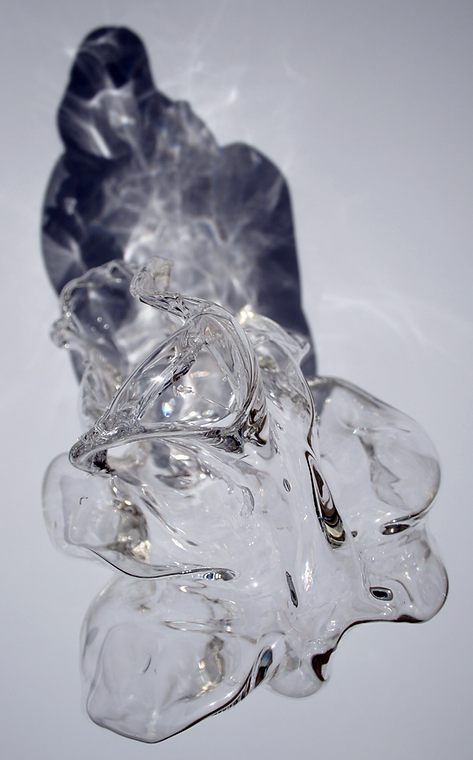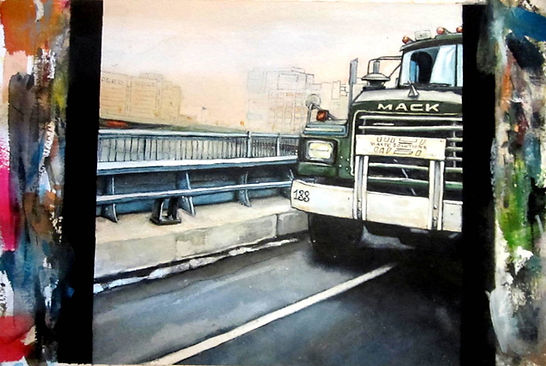ACADEMIC
CENTRO MICHELANGELO Florence, Italy
Advanced Travel Studio F2014
OBORDO, A MASK Venice, Italy
M.Arch Thesis 2014-15
GREEN SCHOOL Bali
Case Study S2014
BOOLEAN LOGIC
S2014
IVY
S2014
ARTITECTURE
Undergraduate Thesis 2010-11
PROFESSIONAL
FINE ART
Digital Collage / Watercolor Painting / Photography
*
SCROLL OR SELECT IN MENU
CENTRO MICHELANGELO
Critic> Friedrich St. Florian
RISD Advanced Travel Studio> Fall 2014

+
+
Il Duomo


N
^


Mercato Centrale
Florence, Italy
The Italian government, the commune of Florence, and the Casa Buonnaroti have agreed to establish an institute for the scholarly study of Michelangelo. A site north of San Lorenzo Church has been chosen for its proximity to significant artifacts of Michelangelo's work. Due to many alterations, both the north flank of the church, once engaged in the fabric of the city, and the east facade remain incomplete. The resulting condition is an ill defined street-piazza that has become an extension of the Mercato Centrale. 'Centro Michelangelo' offers the opportunity to imbed S. Lorenzo and re-frame it's original piazza.
To sensitively address the historic context and the community market the Centro chooses to bridge across the site creating a "loggia' for the market and a "gate' to San Lorenzo. Its form is organized by two critical diagonals on the site, the first is the predominate pedestrian traffic moving between the Mercato Centrale and the Duomo, and the second is the ideal sightline from the corner of Palazzo Medici to the duomo of S. Lorenzo. Defining the building's form, the generated knife edge allows the Centro to disappear beside Michelangelo's unfinished facade.


Pallazzo Medici
+



*
CLICK TO ZOOM

OBORDO
Advisor> Elizabeth Ghiseline
RISD M.Arch Thesis> 2014-15
Venice, Italy
SYNOPSIS
The mask is about Obordo, a city within a city. Surrounded and infiltrated by water, the host city generated an experience so profound, an entire city of followers was born within its domain. It is the particular conditions of exchange and juxtaposition that Obordo has claimed. The dialogue between land and sea is the source of its unique language. More sensory than spoken the amphibious culture is familiar to many but understood by few. Wherever Obordo is understood, the city exists. The enigmatic city of Obordo is made of discrete factions dispersed within its host. Obordo is not concerned with its own past, present or, future. It is created and destroyed by time, though time cannot be created. While the host city’s peak came and went, Obordo has always been. Visiting the host city, the desire is to know the city within. The visitor is invited to find and experience Obordo through a sequence of theatrical spaces.





*
CLICK TO VIEW PLANS &
SECTIONS IN DETAIL



ABOVE
Accordion booklet of the mask telling the story of the play across an unfolded section. The viewer flips each page to reveal the next scene. Perspectives are shown in between for the transitions between each scene. Click for detailed views.
BELOW
A 48" x 48 " 1/8 scale model of Scene Three: Vessel. The model depicts the strong contrast of above and below, as well as the notion of fictional terra-firma. Four detail images show the ramp descending through the cisterns hull, the four unique theaters of the cisterns, and the representation of columns below.



'PAINTING THE LIGHT'
watercolor and gouache on 300 lb Arches coldpress
LEFT
Light is projected through six points at an equal distance at the top and bottom of the rippled glass vessel. The vessels curvature is remapped through the extreme concentrated highlights and deep shadows. The phenomena is captured in watercolors.
BELOW
Wooden Blow Mold 2
Controlled Vessel
In the second attempt a paddle was used to block excess flow out of the widest point in the mold. the result is a water tight vessel with an undulating surface of negative and positive lenses. The largest ripple can be seen here in the bottom of the image. Its form is slightly flattened on is vertical face.
Wooden Blow Mold 2
Blown-Out Vessel
A large puncture resulted from the excess flow of the first attempt at the blow mold. A space between the fins was just large enough that the molten glass travelled in the path of the least resistance to reach the point of rupture. The vessel was removed from the mold and cooled to preserve its form.

01

02
POSITION
The play between “liquid” and “solid” in Venice generates rich atmospheric conditions. The complexity of situations and experiences has produced an extensive discourse on the “magic” of the city. Furthermore, the fictional terra-firma of the archipelago has inspired positions that Venice is “floating” or “sinking.” Understood as Elements these precedents can be mapped into behavioral patterns of physical and metaphorical “floating” or “sinking.” Each Element represents a scaled apparatus for phenomena, just as the city is the apparatus and theater for its magic.
Within this selected discourse there are a number of built and unbuilt theaters for Venice. Examples such as Aldo Rossi’s ‘Teatro del Mondo,’ Alvise Cornaro’s unbuilt ‘Grand Theater,’ and Pink Floyd’s 1989 concert each envisioned a floating space within the Bacino di San Marco. Venice also has a long tradition of processional events, some of which employ the use of floating bridges. This inquiry thus intends to examine the chart of "floating" and "sinking" Elements to Discover the Venice of the empty spaces, the unseen Venice (b).
I have selected the modern ‘procession’ of the pedestrian in Venice for my intervention. The route is frequented by the 166,955 visitors during peak festivities and is considered the most efficient route between the transportation center, Piazzale Roma, and the cultural center of Venice, Piazza San Marco. Despite being the face of Venice, the experience of this route is atypical for the lagoon city. The average width of a pedestrian path in venice is 6 feet, but along this route paths reach 40 feet wide. These dimensions are the result of rio terà or the infilling of canals to create commercial thoroughfares. In the early 19th century pedestrian reform in Venice was the result of banking and insurance shifting the power structure of the city. These walkable voids leveraged ‘traffic’ for commercial and political growth. Today the throughfares are lined with international boutiques and street vendors selling tourist wares. Overall, the experience of engaging with water or witnessing the unique atmospheric phenomena is near eliminated.
METHODOLOGIES
+ Scientific metaphors as a framework for inquiry into my selected discourse
+ Glassblowing as haptic experience of the unseen forces
+ Glass artifacts to reveal the process used in form making
+ Testing of glass with mediums of light and/or water for creation of phenomenal
+ Exploration and testing of glass mold-blowing as form-making strategy
+ Production of apparatuses for theatric space
+ Development of narrative sequence for Venice(b) based on discoveries within Elements
+ Creation of resulting sequence of theatrical spaces of the unseen Venice(b)


'GRAVITY'
15 mold-blown glass pieces, nylon, LED pinspot

Vessels of glass are generated to illuminate the particular circumstances in their making. They appear to engage gravity sinking into a handcrafted lattice resembling a fisherman’s net. A likeness between glass and water is pushed as the vessels appear to liquify and ooze around their nets. An ambiguity between sinking and floating is captured. Is the construction sinking more directly that it floats? Could sinking be a form of flotation? How does the work change with the addition of light as a material? Are the vessels then liquid or solid?
LEFT
Gravity installed in Glass Dept. gallery. Shown with light pooling beneath sculpture.The oozing vessels create caustic nephroid patterns similar to those formed by waves on the water’s surface.
ABOVE
Detail of vessels and their suspension.
PROCESS [blowing into copper lattice structures]


VESSEL 07/15
Gravity: reduced/allowed/exaggerated
Net Pattern: geometric/regular/random
Net Size: small/large
Air: released/held
Base: blown-out/thick
Failure: none/cracked/breached
Copper Trace: none/some/all
ABOVE
Two sequences of blowing glass into copper molds. Analysis shows the use of gravity, air, heat, rotation, and water to impact the vessels form.
LEFT
Anatomy and analysis of vessel from GRAVITY series. The vessel displays the unique result of the employed parameters.
GLASS + WATER
GLASS + LIGHT
CHILL MARK
+
ABOVE
Performance of a glass lens rotating in space while focal length is adjusted. The resulting light-image is produced by the transformation that occurred in rapidly cooling one side of the molten glass.
LEFT
This vessel has been filled with water and suspended from a simple armature. The appearance of the oozing vessel reveals a lensing property in this position. Images of the surrounding environment appear flickering in and out of focus. When the focal length is discovered, a scene is revealed inverted and magnified in the convex lens.
WATER LENS
+


'HAULING ONTO THE HARD'
watercolor and gouache on 300 lb Arches coldpress
GREEN SCHOOL
Digital Representation Workshop> 2013

BOOLEAN LOGIC
Digital Representation Workshop> 2013

Boolean Logic is inspired by the 'human-limb object,' defined in Le Corbusier's 1925 book, L'Art Decoratif d'aujourd'hui. This attaché tote desires to be a humble servant to the designer in the age of digital technology. Like digital logic, the tote deals in the positive and negative values of boolean algebra, 0 and 1, true and false. Its discrete volume is thus excavated to deal with essential utilities in additive and subtractive forms.
IVY
Digital Representation Workshop> 2013

Ivy is inspired by the work of Anne Lusk, a researcher at the Harvard School of Public health. Lusk believes that bikes belong inside and can serve as a “social bridge.” Ivy is a response to the need for indoor bike dwellings that preserve urban circulation space and foster social gathering. The vines in the system flex and tangle to accept any bicycle typology and bend away while not in use.
ARTITECTURE
Undergraduate Thesis> 2010-11
'GRAFITTI SERIES'
watercolor and gouache on 300 lb Arches coldpress






'SIGNAGE SERIES'
watercolor and gouache on cut 300 lb Arches coldpress





'SIGNAGE SERIES'
Digital collages on vinyl canvas




'SOLO THESIS EXHIBITION'
Loyola University Maryland Blackbox Theater
May 2011










FINE ART
Digital Collage
Watercolor Painting
Photography

'Divination Ristretto'
Digital Collage
Polaroids
Fujifilm Instax Instant Film with Double Exposures












Watercolor Painting
Various watercolor and gouache works on 300 lb Arches coldpress





